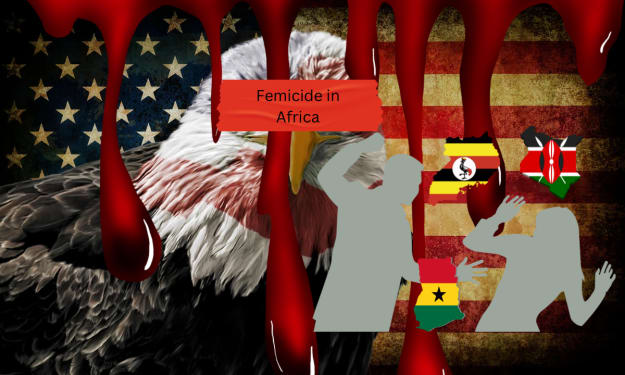Black Wall Street: A Story of Black Excellence Destroyed
96 years ago, white supremacists destroyed a black community in Tulsa, Oklahoma.

May 31st, 2017 marked the 96th anniversary of the destruction of one most affluent black neighborhoods in America. Greenwood was a neighborhood in Tulsa, Oklahoma, also known as Black Wall Street. Black Wall Street is often omitted, and forgotten from some history books because it was the biggest riot in American history displaying the inhumane injustices that happened to African-Americans.
White supremacists destroyed 35-city blocks that went up into flames, 300 people died and 800 people were injured. The motivation behind this terrorist attack was for the defense of a white woman. According to one eyewitness, the area was bombed by plane with kerosene and/or nitroglycerin, causing the fire at act more aggressively.

In 1906, O.W. Gurley was a wealthy African-American from Arkansas, and moved to Tulsa and purchased 40-acres of land, and sold it to African-Americans, according to Christina Montford of the Atlanta Black Star. Gurley provided opportunities for African-Americans who were migrating from the harsh inhumane oppression from the Deep South.
On May 31st, 1921, a black man named Dick Rowland entered an elevator with a white woman named Sarah Page and she screamed. The Tulsa Tribune, the afternoon newspaper printed a front-page story, "Nab Negro for Attacking Girl in an Elevator." Within an hour of the paper’s release, there was "lynch" talk amongst the whites.
Page first said Rowland raped her, but recanted her story and said Rowland just tripped and fell onto her, and unfortunately, Rowland was still arrested. The white supremacists didn’t care about the truth and got the excuse they needed because they created havoc in Black Wall Street.
Both black and whites were armed at the courthouse, and a fight broke out, then shots were fired. The blacks were outnumbered and retreated to Greenwood, but the whites followed, and on the way they were looting, burning down businesses and homes.

9,000 people lost their homes, according to Josie Pickens of Ebony. Black Wall Street had banks, hotels, cafés, a bus system, a hospital, newspapers, drug stores, libraries, churches, clothing and grocery stores, a post office, night clubs, offices hosted by black doctors, lawyers and dentists, movie theatres and a superior school system, which was resented by less fortunate whites. This terrorist attack happened out of an act of jealousy, attempting to put progressive, high achieving African-Americans in their place.
According to Montford, the average income for black families in this area exceeded minimum wage, and at the time, the state of Oklahoma had two airports, and six black families owned their own planes.
Tulsa became the city with the most African-Americans at the time, according to Sociologist Chris M. Messer. Tulsa’s change in racial demographics motivated white animosity against black economic progress. Whites resented that blacks no longer accepted second-class citizenship in their own homeland.
The police also played a role by contributing in the riot. For instance, they lacked leadership skills, and participated in the riot by giving white supremacists guns which multiplied the police force overnight. The police arrested blacks and turned them over to detention camps, while the supremacist whites who participated in the riot were never arrested.
The politicians and the media also played a role by presenting a false narrative that the Tulsa riot happened because the uprising of lawless black people. Tulsa newspapers referred to the Greenwood district as “Little Africa,” and the people living there were labeled as boozers, drug addicts and ran around with guns.

The Tulsa World newspaper made tensions between blacks and whites worse by suggesting the Ku Klux Klan should restore order to the community. The suggestion that a white terrorist group like the "KKK" should intervene demonstrated how white supremacy could be promoted by a mainstream newspaper to kill black people.
Whites responded to black pride with “social control,” which included segregation and lynching’s, according to Messer.
Walter F. White of the National Association for the Advancement of Colored People (NAACP) said because of the oil boom, Greenwood had grown from 18,182 in 1910 to 90,000 to 100,000 in 1920. White claimed the wealth of the town rivaled the “forty-niners” in California, and when blacks experienced wealth, lower-whites resented their success.
Many whites believed they were members of the divinely superior race, and couldn’t understand why some blacks were worth $1 million. White also said many of the white pioneers in Oklahoma were former residents of Mississippi, Georgia, Tennessee, and Texas. But unfortunately, they couldn’t leave their prejudices behind in the Deep South.
According to a Black Wall Street documentary on YouTube, before the white supremacists invaded every house in Greenwood, the lower-class white women would go into the homes of wealthy African-Americans, and they stole all the furniture, clothes, and other valuables before the home was set on fire.
One of the most disturbing stories from the documentary was about an African-American man who served in the U.S. military. While the white supremacists were causing havoc in Black Wall Street, he put on his military uniform and walked outside thinking the white supremacists wouldn’t shoot him because he served in the military. When he walked outside, he was shot dead in cold blood because the white supremacists didn’t see a military man.
According to Hannibal Johnson, author of Black Wall Street: From Riot to Renaissance in Tulsa’s Historic Greenwood District, he explained the survivors and their families never received reparations suggested by the Tulsa Race Riot Commission. The commissions recommended reparations for people who lost property and proposed an establishment of a scholarship fund. This happened, but only for a limited time.
The commission also proposed economic revitalization of the Greenwood community, but despite the tragic events, these ideas never manifested into reality.
After the dust settled, whites blamed blacks for the destruction of the Greenwood community, even though there was clear evidence that whites invaded the town with the intentions of burning and bombing the community. The whites goal was to erase Black Wall Street from history like it never existed. It’s sad that whites caused massive destruction to the Greenwood community because of their jealousy, hate, envy, discrimination and arrogance towards African-American success.
White superiority was threatened once they saw blacks were gaining confidence, showing black pride and built their own town which included businesses, homes, banks, hotels, schools, stores and much more. Whites realized the hard work of blacks were beginning to put them at the same or better economic level.
Some drastic and inhumane measures needed to be taken to keep white society ahead of blacks. 300 people died, 800 were injured and a whole town was destroyed in the worst race riot in American history to keep white society ahead of blacks.
About the Creator
Darryl C. Richie
Inspirational Speaker, Author and Blogger looking to inspire with my story of being a two-time cancer survivor and hip amputee, and connect the African Diaspora to their African roots via Black Consciousness.






Comments (1)
My older relatives (all "white"), who were all born in Oklahoma, and who were all within fifteen-to twenty-five years old, at the time of the destruction of Greenwood, were quite silent about the massacre. When I was about eight years old, when there were "race riots" in the US (in response to the murder of Dr King), I had heard about the "Tulsa Race Riot", and I asked my older relatives about it. Their response (and you might not be able to believe this): "Well, you know how THOSE PEOPLE are..." I knew they were not telling me the truth, and that someday I would learn the truth. I have finally learned the truth, and I fully support all the efforts that Tulsa and Oklahoma have made, to make reparations to the victims of this senseless mass-murder.